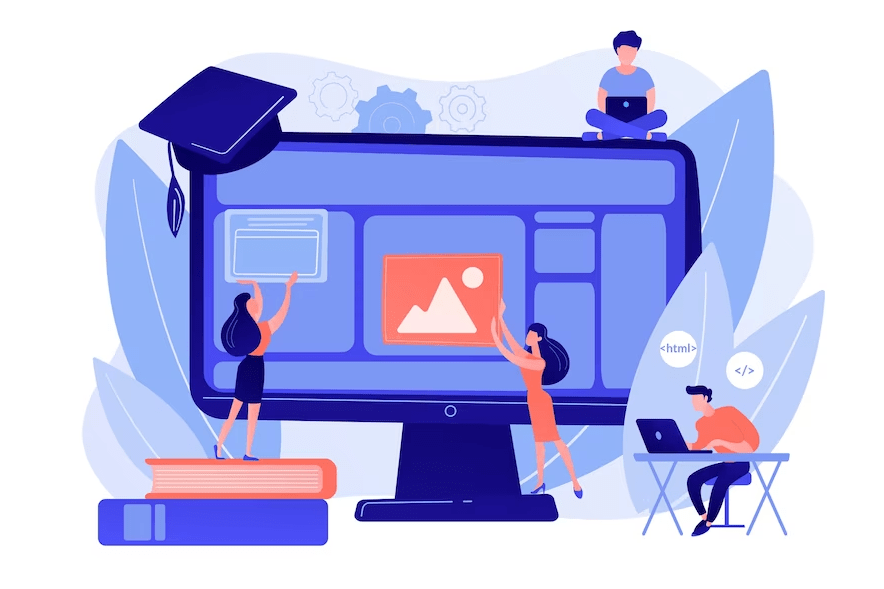
Are you feeling overwhelmed by the prospect of beginning design training for yourself? If this describes you, you are not alone. Many students find themselves in a similar position and don’t know where to begin when it comes to honing their design skills. What’s more, many feel discouraged facing an intimidating and complicated learning curve that comes with any new field or subject matter, there is hope! With a few practical tips, organizing your own effective design training program can be straightforward and rewarding – if you know how to go about it. But if you are still afraid, then thesisrush.com will come in handy and help you with your studies.
Writing a design syllabus is like writing an essay, for some it may be an easy task and some may need help. Like the student who writes a Google query: write my essay, hoping for a solution to their problem.
In this article, we will help you become a student for whom this is an easy task.
Keep reading as we break down everything you need to organize a successful training program all on your own!
Keep reading as we break down everything you need to organize a successful training program all on your own!
Research relevant design topics that are of interest to you
Design is evolving, and it can be difficult to keep up with all the latest trends and technologies. If you want to stay ahead of the curve, it’s important to keep your skills sharp and to stay up-to-date on the latest trends.
One way to do this is to create a design training program for yourself. By researching relevant design topics that interest you, you can create a program that will help you learn new skills and keep your existing skills sharp.
Not sure where to start? Here are a few tips:
- Start by identifying the areas you want to focus on. Are you interested in learning more about digital design? Typography? User experience? Once you’ve identified your focus areas, you can start to research relevant topics.
- Use a variety of resources to learn about your chosen topics
Set measurable goals and objectives for your training program
The most important part of any training program is setting measurable goals. Without specific and achievable goals, it’s impossible to gauge the success of your program. Without goals, you won’t be able to determine whether your program is effective.
Setting goals for your training program is easy. The first step is to identify the desired outcome of the program. What do you hope to achieve by the end of the program? Once you have a clear idea of the program’s purpose, you can begin setting goals.
Since students usually don’t have much time, you also have to learn how to prioritize. To learn a skill you are interested in or to write homework? If you have the thought: hire experts to write my paper, then you understand what is the priority!
Investment in learning a practical skill can bear fruit soon after passing the material, which can not be said about the completed ass, for which you can only get a good grade.
Some goals you may want to set for your training program include:
- increasing your knowledge of a certain subject
- mastering a new skill
- becoming more efficient in your work
- improving your writing ability
These are a few examples – the goals you set for your program will be unique to you and your
Some things to consider while developing goals:
- Choose goals that are specific and measurable.
- Set goals that are achievable, but challenging.
- Make sure your goals are relevant to your training program.
- Set a timeframe for each goal.
By following these guidelines, you can be sure that your goals are realistic and achievable. With a clear plan and some dedication, you’ll be on your way to reaching your full potential as a designer.
Keep track of your progress by creating a timeline with milestones

Creating a timeline for your training can be a great way to track your progress and stay motivated. By setting milestones for yourself, you can see how far you’ve come and how much you’ve accomplished. This can be especially helpful when you’re feeling discouraged or like you’re not making any progress.
Creating a timeline is simple. choose a start date and end date for your training, and then add in milestones for each week or month. You can make your milestones as big or small as you want, but try to make them realistic. For example, if you’re training for a marathon, you might have a milestone of running 20 miles per week. Or if you’re learning a new language, you might have a milestone of being able to have a basic conversation in that language.
Identify the necessary tools, resources, and software needed to achieve your goals
Design learning is a process of acquiring the skills and knowledge needed to design products or experiences that solve real-world problems. The first step in design learning is to identify the tools, resources, and software needed to achieve your goals.
Some of the most popular design tools used by professionals today include Adobe Photoshop, Sketch, and Invision. Yet, there are many other great tools out there that can be used for design learning, such as Figma, Webflow, and Adobe XD.
Besides design tools, there are also some resources and software programs that can help you learn design. Some of the best resources for design learning include free online courses, tutorials, and books. And, of course, practice makes perfect, so be sure to get plenty of practice with whatever design tools and resources you use.
Take advantage of online learning platforms, such as Udemy or Coursera
As the world moves online, there are more and more opportunities to take advantage of online learning platforms. These platforms can be a great way to learn new skills, including design skills.
There are many online learning platforms that offer design courses, such as Udemy and Coursera. These courses can be a great way to learn about different aspects of design, from the basics of graphic design to more advanced concepts.
So if you’re looking to learn more about design, be sure to check out some of these online learning platforms. With a little effort, you can gain some valuable design skills that will help you in your career.
Develop a portfolio showcasing the projects you complete in the program
As you complete projects during the learning program, be sure to add them to your portfolio. This will be a great way to showcase the skills you’re acquiring and the progress you’re making. At the end of the program, you’ll have a portfolio full of projects that you can show to potential employers. And who knows – one of those projects might be the one that lands you your dream job. So start building your portfolio today!

